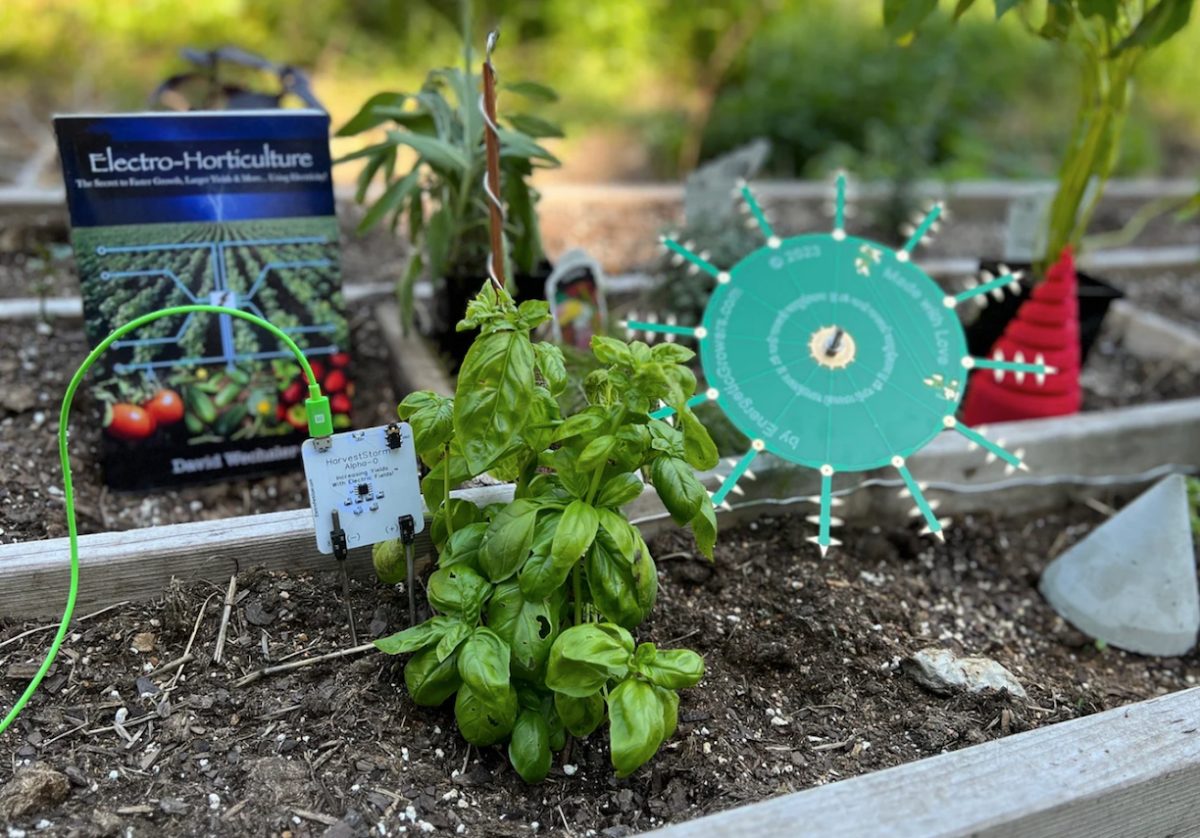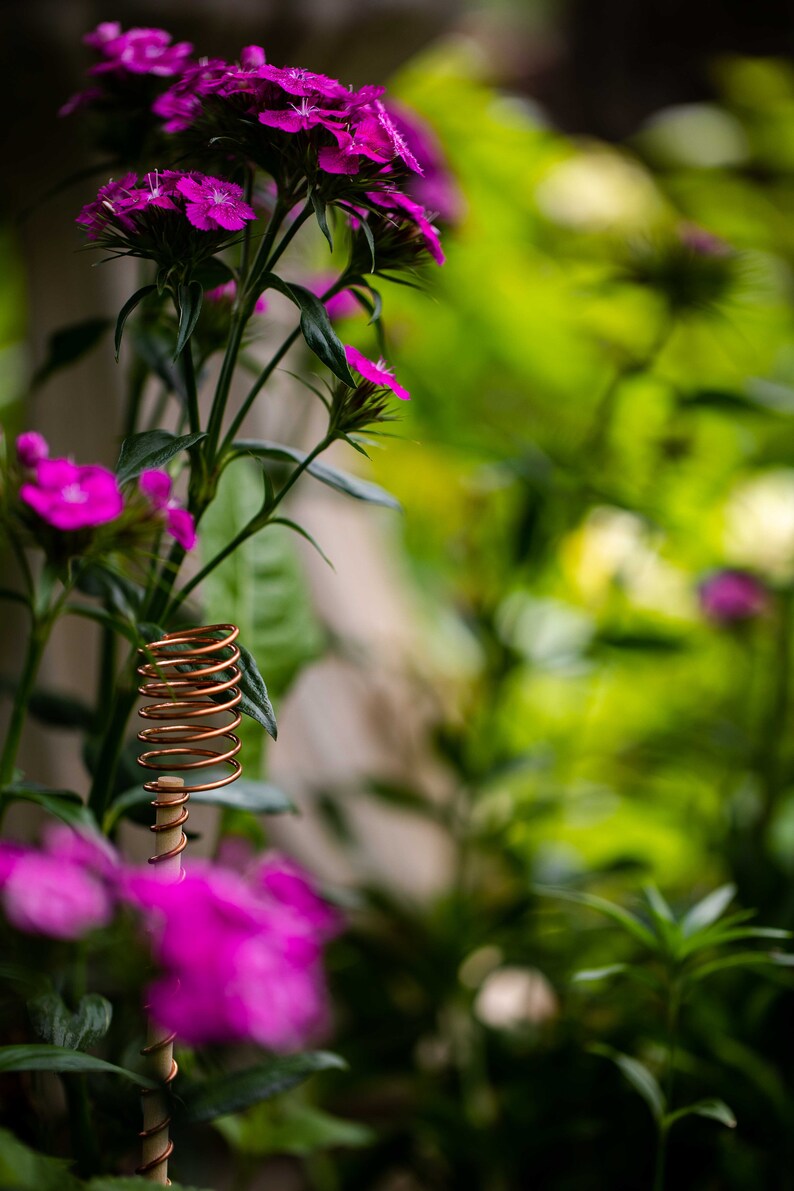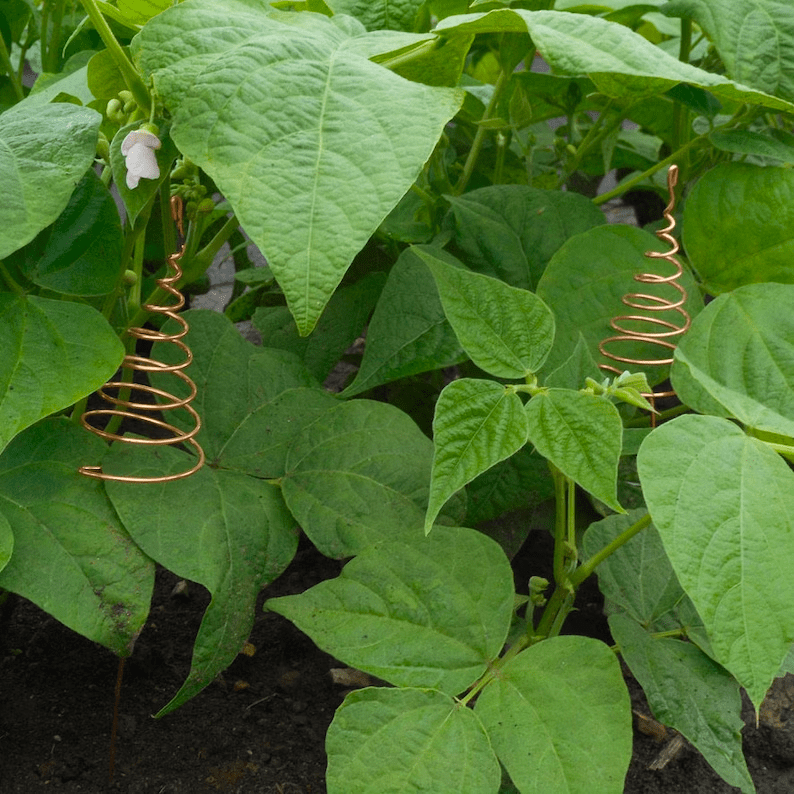

We may earn revenue from the products available on this page and participate in affiliate programs. Learn More ›
Q: I’m interested in learning new techniques to make my garden thrive without chemicals. Other gardeners have mentioned trying electroculture. How does electroculture gardening work, and is it effective?
A: Whether you’ve seen it on social media or heard about it directly from an avid gardener, electroculture is a polarizing topic—people either love it or don’t believe in it at all. Of course, you can find information online that “proves” either case. Still, even though it’s a centuries-old practice, you’ll be hard-pressed to find a discernable answer with research-based proof, but it’s worth trying.
Electroculture gardening attempts to stimulate plant growth and improve crop yields by giving plants electricity as an energy source. There are a few advantages as a result: the garden allegedly then needs no pesticides, fertilizers, or manure. Legend also says that plants grow better and yield more crops, which makes a case that electroculture could be a game-changer for growing produce to feed larger populations.
Let’s dig a little deeper into electroculture, so you can decide if it’s something you want to try in your home garden.
Electroculture can be traced back to 1749.
Even though TikTok might lead you to believe that electroculture gardening is a new fad, this method is hundreds of years old.
The first scientist who noticed the effects of electricity on vegetation was Abbe Nollet back in 1749. Nollet claimed that electricity contributed to seed germination and quicker movement of water and minerals from the roots to the rest of the plants. Several years later, Nollet invented the first electro-vegetometer—a device that stimulates plants with electricity from the atmosphere.
From the 1920s to the 1940s, scientists like Justin Christofleau and Viktor Schauberger built on Nollet’s work. However, around this time synthetic pesticides started being used more in gardens, which may have eclipsed further in-depth research into electroculture gardening for several decades.
Electroculture requires sun, clouds, rain, nitrogen, and an atmospheric antenna.
To create an atmospheric antenna, it helps to have a fundamental understanding of how they work. Some say electroculture gardening works because plants can absorb and use atmospheric electricity as a source of energy for increased growth and better resistance to pests and diseases. This energy comes from vibrations and frequency—things like weather, wind, and temperature.

Anyone can make an atmospheric antenna with a wood stake and copper, zinc, or brass wire; other wires work, but these materials are best. Theoretically, the taller the antenna, the more your plants will grow. Wrap the stake in wire, and at the top, create a Fibonacci spiral (or several) that will face magnetic north once you drive the stake 6 to 8 inches into the soil. If you don’t have a wooden stake or dowel, you can also use a copper rod.
Though the antenna looks like abstract art, the arms and spirals are designed to work like a battery to power plants. They are said to capture positive atmospheric energy that moves to the negative currents in the earth.
RELATED: Solved! Does Salt Kill Weeds?
The reality of electroculture is that it may not work.
A 2007 published scientific study said that there is electrical signaling associated with plants and environmental stimuli, so there might be some merit in using electrical current to prompt responses from plants. The idea of no longer requiring fertilizers, pesticides, herbicides, and other chemicals in your garden can make a compelling case for trying electroculture gardening. However, the results touted on social media or by a scientific study can be difficult to replicate at home.

One reason is that there are several techniques other than atmospheric antennas. Some methods use electroculture equipment such as direct current (DC) or alternating current (AC) from a low-intensity generator, water treated with electricity using an electrolysis process, solar power, and more. Each type of electroculture may produce different results, and even then, there isn’t sufficient proof that electroculture even makes a difference, although some optimistic results are being reported out of China by phys.org.
Previous studies reporting optimistic outcomes have faced claims of flaws in their methodology due to a lack of empirical evidence that electroculture—and not some other factor—influences the results. Plus, there are vast differences in how electroculture works in a controlled research environment and in your backyard. Temperature, weather patterns, exposure to a substance the neighbors spray in their backyard, and more.
RELATED: What Is Banana Water and Is it Actually Good for Plants?
Approach electroculture gardening like a scientist.
Although there is insufficient proof that electroculture works, it might still positively impact your garden; you simply have to try it and see what happens.
Here are some tips to get started with your indoor or outdoor electroculture gardening:
- Find others who do it: join a gardening group or forum to learn from others who have had success with electroculture. They can offer insights, tips, and tricks to try in your yard.
- Set up a control group: the only way to see if an atmospheric antenna affects your garden’s growth is to have a basis of comparison with similar plants grown in otherwise similar conditions.
- Start small: before you go all in on electroculture gardening, use it on a few potted plants or a small garden bed.
- Monitor and make adjustments: document your efforts and change your approach. This may mean using different materials, larger stakes, different vortex spiral techniques, and more.

Final Thoughts
Lack of evidence that electroculture farming or gardening works shouldn’t stop you from trying it out in your yard, but go into it without expectations. Many variables are at play in a garden, and each garden bed is different. As more research goes into electroculture, however, we might see some changes to this gardening trend in the future, so don’t dismiss it too readily.
If you’ve decided to opt out of this gardening practice for now, remember that an excellent way to make your garden grow is to focus on the health of your soil. There are tried-and-true methods for making your soil healthier by offering nutrients, better drainage, aeration, and more. Soil amendments can give your garden what it needs for better growth.
